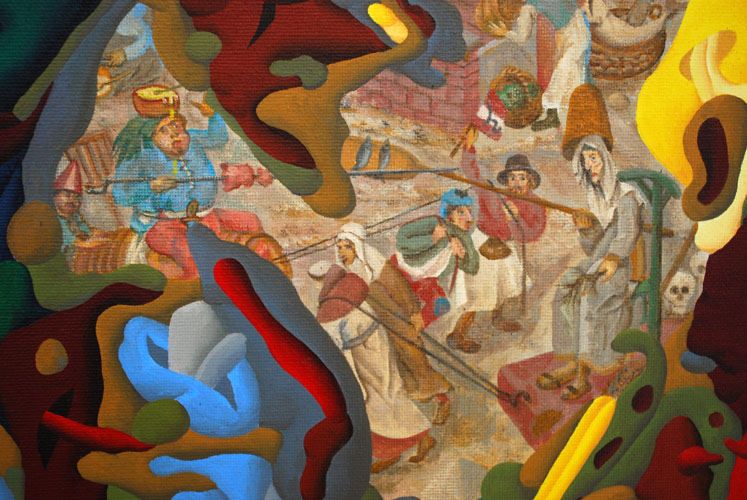
Werner Horvath: "The Economist John Kenneth Galbraith and the Affluent Society". Oil on canvas, 60 x 50 cm, 2011.
In The Affluent Society Galbraith asserts that classical economic theory was true for the eras before the present, which were times of "poverty"; now, however, we have moved from an age of poverty to an age of "affluence", and for such an age, a completely new economic theory is needed. Galbraith's main argument is that as society becomes relatively more affluent, so private business must "create" consumer demand through Advertising, and while this generates artificial affluence through the production of commercial goods and services, the public sector becomes neglected. He points out that while many Americans were able to purchase luxury items, their parks were polluted and their children attended poorly maintained schools. He argues that markets alone will underprovide (or fail to provide at all) for many public goods, whereas private goods are typically "overprovided" due to the process of advertising creating an artificial demand above the individual's basic needs. This emphasis on the power of advertising and consequent overconsumption may have anticipated the drop in savings rates in the USA and elsewhere in the developing world. (Text from Wikipedia)
This painting was also published in the book "Herausforderung Neue Arbeit" of the BSA and the Otto Bauer Institute (Marie Jahoda), printed by Gutenberg Publishing in 2012.
Werner Horvath tries to illustrate these ideas. eg. the big crack between rich and poor regions of the world and the fight of affluence against poverty, in his own way (details see below):

The painting is part of the economist-series, created by Werner Horvath from 2009 to 2011:



From left: "Adam Smith and the invisible hand of the market", "John Maynard Keynes and the secure harbour of Bretton Woods" and "The Economist John Kenneth Galbraith and the Affluent Society".